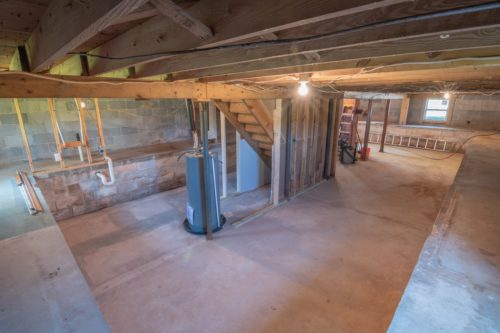Whether you’re a homeowner or builder, chances are you have at least heard of flood vents. But do you really know how important they can be in protecting your basement from flooding? Flood vents help ensure that water is allowed to flow through the foundation walls and relieve hydrostatic pressure – reducing the chance of damage due to excessive moisture buildup. Not only are flood vents required by most building codes for new construction, but having them installed correctly is essential for homeowners looking to protect their homes from potential water damage.
1. Research Flood Vent Types
Before you start installing flood vents, it’s important to know the different types available. There are three main kinds: perimeter-mounted, foundation-mounted, and rooftop-mounted. Each type has its own advantages and disadvantages; so research each style to decide which one will work best for your home. Visit a building materials store for advice on which type is best for your situation. It’s also a good idea to consult your local building code authority to make sure you are following all of the necessary regulations.
2. Prepare the Installation Area
Before you begin installing your flood vents, it’s important to properly prepare the area. You’ll need a tape measure, drill and bits, concrete anchors, masonry screws or nails, caulk and caulking gun (if needed), level, and shims (if needed) to ensure proper installation. Start by measuring the opening you’ll be working with and then note the measurements on the flood vent window frame before removing it from its packaging. This will help make sure that the flood vent is sized correctly for the space. It’s always better to have an extra bit of overlap than not enough – so if in doubt err on the side of caution and go with a larger size.
3. Secure the Flood Vent in Place
Once you have the flood vent in place, it’s time to secure it using screws and washers. Start with the screws on the sides first, then do those at the top and bottom. Depending on the exact model of your flood vent, you may also need to use a special mounting bracket. If so, make sure that you follow the instructions carefully when installing this part of the unit. Once all of the screws are tightened down properly, your flood vent is officially installed and ready for action!
4. Finishing Touches
Once the vent has been installed, it’s time to finish up and prep your basement for flooding. Inside the vent, add a layer of loose fill sand or gravel to help keep debris from getting into the vent. Nearby walls should be sealed with a waterproofing sealant, and any cracks in the foundation should also be filled in with caulk. Finally, if you have gutters near your home, make sure they are clear of debris and directed away from the house so that excess water is not directed toward your basement. With these final steps complete, you can rest easy knowing that your new flood vents will protect your basement from future floods!
5. Monitor the Vents
Once you have installed your flood vents, it is important to keep an eye on them. Make sure that they are kept clean and free of debris. If you notice any blockages in the vents or any damage, make sure to fix these right away so that they can do their job correctly. You should also check your basement regularly for signs of water damage or flooding, just in case the vents fail or don’t work as expected in the event of a flood. Doing this will help protect your home from further water damage and give you peace of mind while keeping your family safe.
6. Have an Emergency Plan Just In Case
It’s important to plan for the worst, even if you’ve taken all of the necessary steps to waterproof your basement. Make sure everyone in your home knows what to do and where to go in case of a flood emergency. It might be smart to purchase a battery-operated sump pump, or another type of backup system, just in case power is lost during a storm. You should also consider investing in non-perishable food items and bottled water that can be accessed quickly if needed.

Installing flood vents in your basement is a great way to protect your home from flooding. By following the steps outlined above, you can be sure that your flood vents are installed correctly and safely, so you can rest easy knowing that they will help keep water out of your basement during heavy rains or floods. Make sure to periodically check on the condition of your flood vents and have an emergency plan in place just in case. With this preparation, you can be ready for anything!

